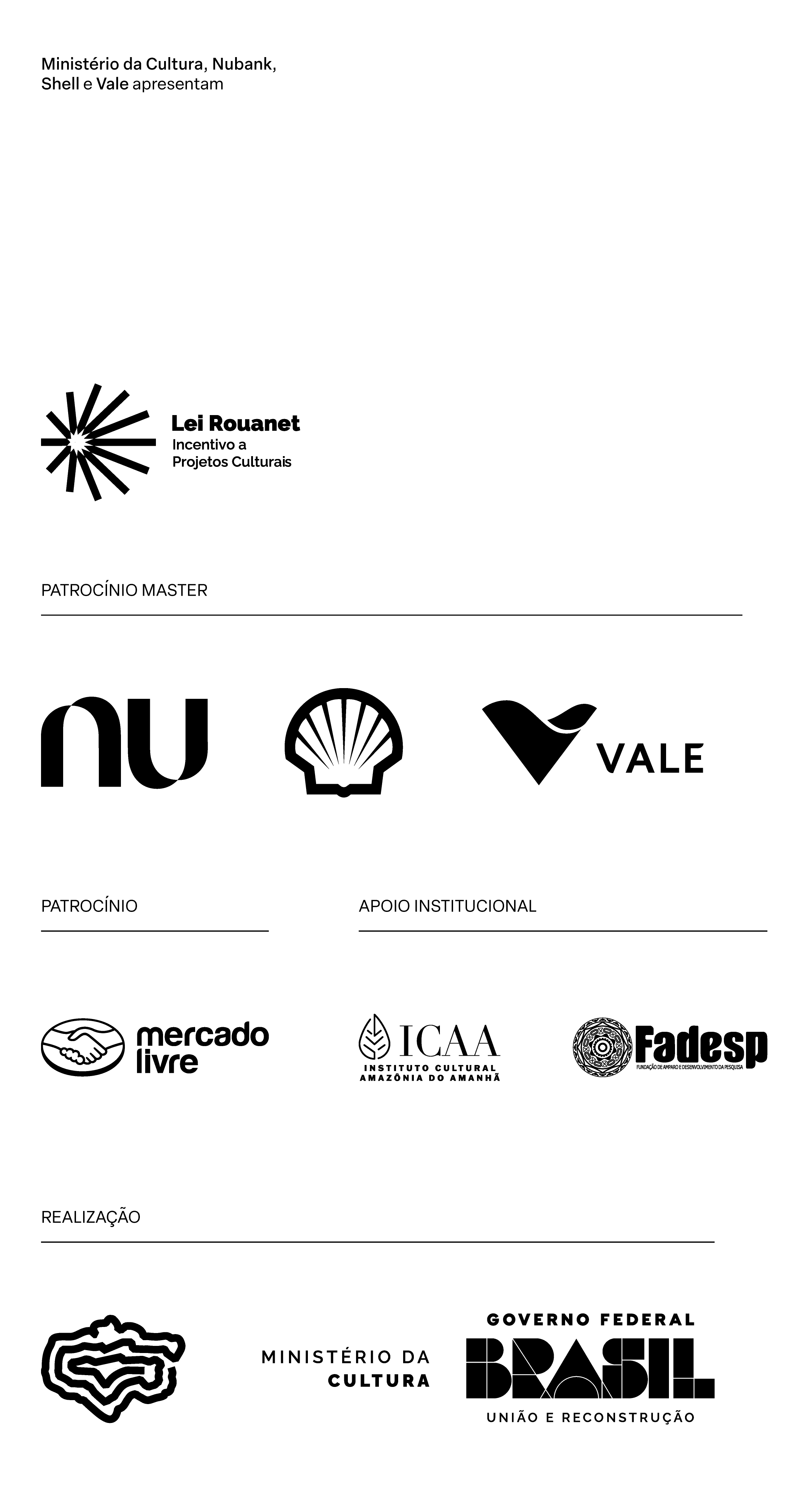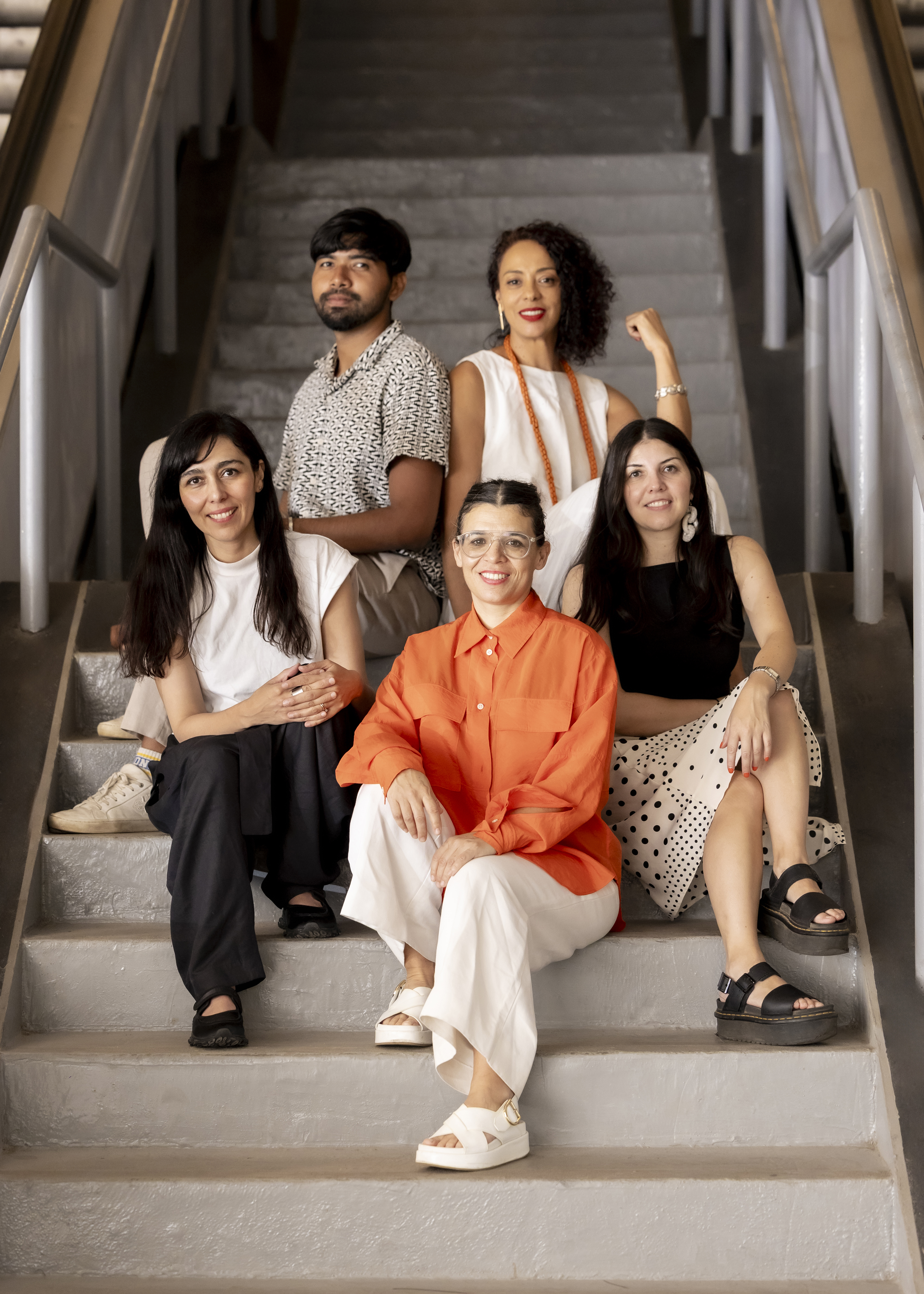Bienal das Amazônias 2025
August 29–November 30, 2025
Centro Cultural Bienal das Amazônias
Belém
Brazil
“Thousands of green shades... distance-green.” — Benedicto Monteiro, Verde Vagomundo (1972)
The 2nd Bienal das Amazônias (2BDA) unfolds through the idea of (distance-green), a poetic inflection inspired by the writings of Benedicto Monteiro (1924–2008), writer from Pará. His work emerges from the Amazon as a terrain of intensities shaped by crossings, suspensions, displacements, and reverberations. Verde-Distância gestures toward a spatial-temporal condition formed not by separation, but by relation: a form of distance that thickens perception and invites attunement across time, matter, and scale.
This edition embraces pan-Amazonian territories and their intertwined histories with the Caribbean as a space of circulation: of rivers, oceans, forests, urban centers and rural towns, Caribbean soundwaves and Andean ice, mineral time, and collective breath.
Taking place in Belém Verde-Distância, brings together a wide range of artistic practices engaged with three conceptual forces: Sonhos (dreams), Memória (memory), and Sotaque (accent). Dreams are not treated as metaphor, but as an embodied way of sensing matter that often escapes visibility. Memory is archive, gesture, and rhythm. It unfolds in the flesh, in silence, and in the ground itself. Accent resonates beyond speech, it moves through those in transit, marks the voice with historical trace and fracture, and becomes the audible pulse of life.
Rather than follow predetermined paths, Verde-Distância moves across shifting contours, attentive to resonance, tension, and displacement. It draws constellations between situated knowledges and temporal dissonances, composing proximities that are porous and contingent. Through the artists, geography appears as a dynamic constellation of signs that are felt, exchanged, and continuously reconfigured.
At its core, this biennial is political. It attends to broken histories and contested presents, to extractive structures and the legacies they leave behind. It creates room for tension, conflict, and friction, without seeking resolution. Within this shared space, ways of living continue to take form —plural, situated, and ongoing —persisting alongside and despite the forces that seek to contain them.
The biennial is curated by Manuela Moscoso (Chief Curator), with Sara Garzón (Associate Curator), Jean da Silva (Co-Curator of the Public Program), and Mónica Amieva (Pedagogical Curator). The visual identity is designed by Priscila Clementti in collaboration with Bonikta, and the exhibition architecture is developed by Isabel Xavier.
Participating artists:
Aileen Gavonel + Máxima Acuña, Aimema Uai, Alessandro Fracta, Akha, Amazonizando, Ana María Millán, Ana Ruas, Andrés Pereira Paz, Angélica Alomoto, Antonio Paucar, Astrid González, Augusto N. Martínez, Bárbara Savannah, Brus Rubio, Buga Peralta, Carla Duncan, Carchíris, Chico Ribeiro, Danilo de S’Acre, Dayro Carrasquilla, Delfina Nina, L.Emperatriz Plácido San Martín, Estado Fósil, Feliciano Lana, Gianfranco Annichini, Gustavo Toaquiza Ugsha, Gwladys Gambie, Isabella Celis Campos, Jaider Esbell, Jean-François Boclé, Jim C. Nedd, John Lie A Fo, José Luis Macas, Joseca Yanomami, Julia Chambi López, Julieth Morales, Keisha Scarville, Kenia Almaraz Murillo, Kuenan Mayu, La Vulcanizadora, Linda Pongutá, Lucia Pizzani, Mapa Teatro +Nukak, Marajó Estampado, Marcelle Nascimento, Marie-Claire Messouma Manlanbien, Mali Salazar, Mauricio Igor, Mayro Romero, Nathalie Leroy Fiévée, Nathyfa Michel, Olinda Silvano, Osvaldo Gaia, Paty Wolff, Pedro Neves, Peter Minshall, Regina Vater, Remy Jungerman, Rinaldo Klas, River Claure, Roberto Evangelista, Roma Rio, Ronny Quevedo, Rubén Elías Barrios Rodríguez, Sara Flores, Silvana Mendes, Simon Speiser, Simón Uribe, Tawna, Werebere, Wilson Díaz, Wira Tini, Zahỳ Tentehar, Zimar.
Event information: Biennial period: August 29 to November 30, 2025
Press contact: Luiz Cláudio Fernandes, luiz@bienalamazonias.com.br

